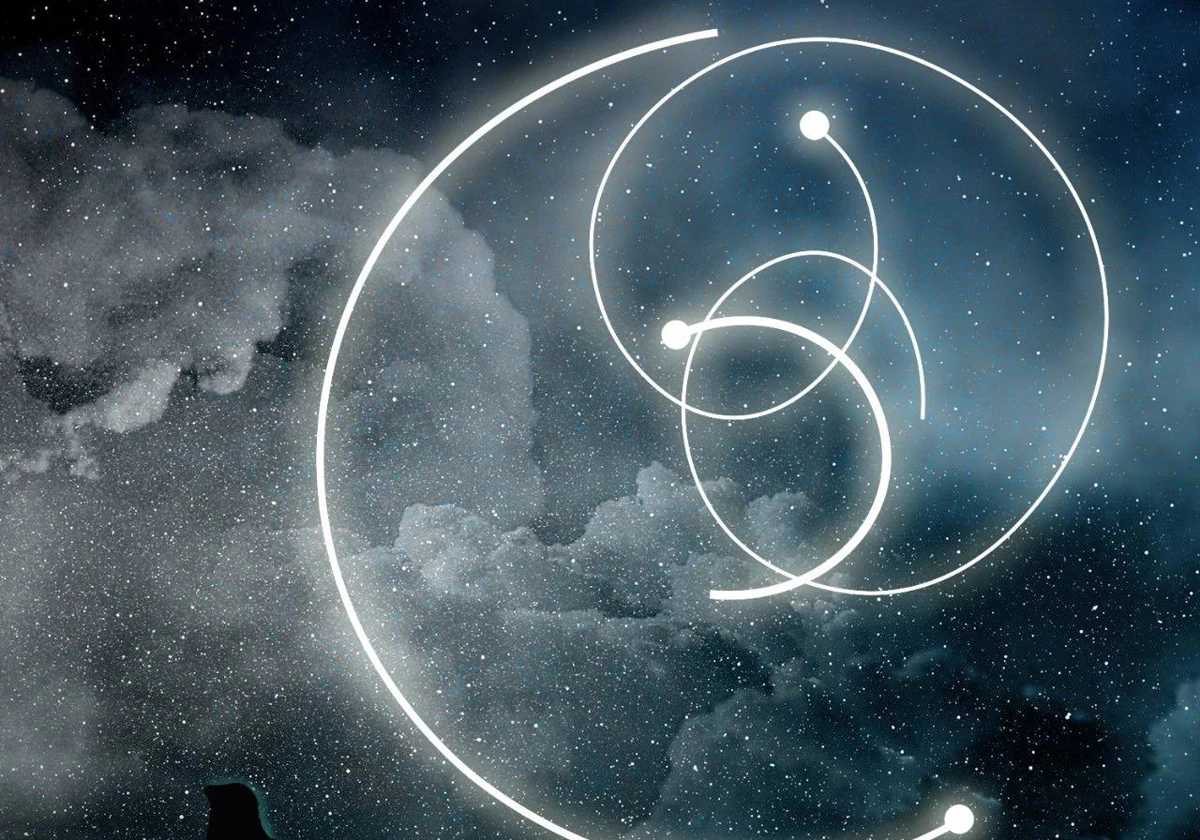The so-called “three-body problem” has been worrying mathematicians for three centuries. In fact, thanks to Newton’s laws, it is possible to easily describe the motion of two bodies in orbit, and calculate in great detail how their gravity will affect each other in the future. But the problem becomes more complex when a third object is added. So complex that it becomes unsolvable.
The truth is that there is no single solution to the issue, which depends on a huge number of variables. The laws of physics tell us that by knowing the initial state of a system, it will be possible to predict any future state of that system, and apply the appropriate laws. But it is almost impossible to know the initial state of a system consisting of three bodies orbiting each other. It is a chaotic system in which anything is possible and there is no way to express its solution in a formula.
That is why mathematicians resort to the “trick” of setting initial conditions themselves (which do not have to correspond to real conditions) and looking for possible solutions to those specific configurations. In 2017, for example, researchers found 1,223 new solutions for the three-body problem, which doubled the number of possibilities known until then.
Now, Ivan Hristov of Sofia University in Bulgaria and his colleagues have managed to “discover” thousands of potential new orbits, all of which “work” by applying Newton’s laws. To achieve this, the team ran an improved version of the algorithm used in the 2017 work on a supercomputer, and discovered 12,392 new solutions. According to Christoph, if he repeated the search using more powerful devices, he could find “up to five times more.” The study can now be viewed on the pre-publication server arXiv.
All solutions start from an initial state in which the three objects are stationary, then enter a state of free fall and allow gravity to pull them toward each other. Their momentum then carries them side by side before they slow down, stop, and attract each other again. The team found that, assuming there was no friction, the pattern would repeat itself indefinitely.
Solutions to the three-body problem are of great interest to astronomers, as they can describe how any three celestial bodies (whether stars, planets, or moons) can maintain a stable orbit. However, it remains to be seen how stable the new solutions will be if small impacts from other distant objects and other real-world disturbances are also taken into account.
One of more than 12,000 new solutions that scientists have now discovered
Ivan Hristov, Radoslava Hristova, Veljko Dmitrasinović, Kiyotaka Tanikawa
According to Hristov, the astronomical significance of these solutions “will be better known after studying stability, which is very important.” However, whether it is stable or unstable, it is of great theoretical interest. “They have a very beautiful spatial and temporal structure.”
Of course, most, if not all, of the 12,392 solutions found by Hristov and his colleagues require initial conditions so precise that they would probably never occur in nature. If they did, much of it would be unstable, and after complex gravitational interaction, the three-body system would split into a binary system (with only two bodies) while the third, the least massive of the three, would be lost in the immensity of space.

“Beer enthusiast. Subtly charming alcohol junkie. Wannabe internet buff. Typical pop culture lover.”

:quality(85)/cloudfront-us-east-1.images.arcpublishing.com/infobae/MRVSEWSMUDE76ALGNSVPFHPFJU.jpg)
:quality(85)/cloudfront-us-east-1.images.arcpublishing.com/infobae/OP6XMZ4VNBCYHC7YF6RXLFROJM.jpg)
:quality(85)/cloudfront-us-east-1.images.arcpublishing.com/infobae/UTVBELC67FCTNLNEX5VBXRPTNE.jpg)



More Stories
Helldivers II players achieve something they haven't achieved since the game's launch
How to easily unsubscribe from Wise, the fintech entity for international payments
Days can be up to 25 hours long